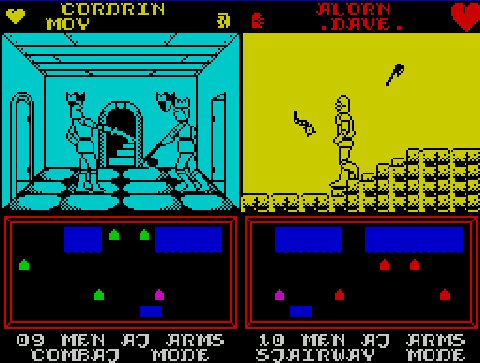So, what have I been up to, you might be wondering? As far as the book goes, I've written about 30 mini-reviews and got some great screenshots for them all. And I've got programmer quotes to go with a few of them, too!
The problem for the blog when doing that is, I don't want to write too much here so that it doesn't spoil anything that will be in the book. That's where this is a bit of a balancing act... I do like to give out information and ideas on what I'm doing, but I want to be sure there will be plenty of fresh and interesting stuff to read in the finished article. So forgive my recent lack of updates, but be assured, we're still moving forwards. Yay!
Now that we're moving toward Christmas, I probably will put my work on the book on hold for a little bit. Probably. It's very easy to fire it back up at a moment's notice, and if I ever get bored of The Bridge on the River Kwai, The Great Escape, James Bond or the other traditional Christmas fayre, there's a more-than-reasonable chance I'll do just that.
What I thought I might do, though, is write a round-up of the new games I've enjoyed this year. It will keep the blog rolling, and show that I'm a slightly more-rounded gamer than you might think! There were loads of fun games released in 2012, and although I haven't played a lot of the really big names, that doesn't mean I can't talk about my favourites. So, keep checking back here, and have a mince pie and a cuppa at the ready. It won't be a list or a rundown, but you can certainly compare my picks with your own, recommend anything I might have missed, or perhaps even find a gem you've been missing out on. Incoming!










































